HWRCs’ 2023 Annual Report



































































































A Compilation of Work Produced by the Federally-Funded Health Workforce Research Centers (HWRCs)






































































































































































































































































































































































TABLE OF CONTENTS 2 INTRODUCTION A Note From HRSA .................................................................... 3 HRSA HWRC Program ............................................................... 4 Dissemination Efforts ............................................................... 5 STUDY HIGHLIGHTS Medical Assistants’ Telehealth Roles and Skills in Primary Care During the COVID-19 Pandemic ..................................... 6 Doula Project 2.0: Increasing the Use of Doulas by Underserved Communities ..................................................... 6 Moral Distress Among Clinicians Working in US Safety Net Practices During the COVID-19 Pandemic: A Mixed Methods Study .......................................................................... 7 Primary Care Provider Medicaid Participation Across theUnited States, 2016 ............................................................. 7 Nursing Education Virtual Meeting Series ............................. 8 Impacts of State Policies on Provision of Teledentistry Services by Safety-Net Providers ............................................ 9 Personal Care Aides: Assessing Self-Care Needs and Worker Shortages in Rural Areas 9 YEAR IN REVIEW Allied Health & Health Equity Workforce Research Centers .................................................................... 11 Carolina Health Workforce Research Center 13 GW Health Workforce Research Center ............................... 15 Health Workforce Technical Assistance Center .................. 17 Oral Health Workforce Research Center.............................. 19 UCSF Health Workforce Research Center on Long-Term Care ...................................................................... 21 MEET THE NEW HWRCs The Consortium for Workforce Research in Public Health ........................................................................... 24 UNC Behavioral Health Workforce Research Center.......... 25
A NOTE FROM HRSA
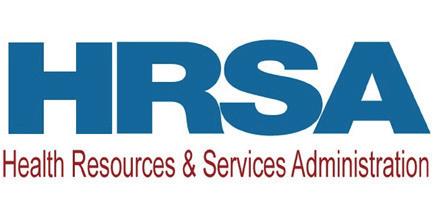

The Health Resources and Services Administration (HRSA) and its Bureau of Health Workforce (BHW) are committed to ensuring effective, evidence-based planning and policymaking. For over a decade, HRSA has sponsored several Health Workforce Research Centers (HWRCs or Centers) in the US that are essential to helping HRSA meet this goal. These centers conduct and disseminate rigorous health workforce research that reflects current and future health workforce needs and informs health workforce policy.
In addition to the 7 centers funded solely by HRSA (with focus areas on emerging health workforce topics, health equity, long-term care, allied health, oral health, and technical assistance), HRSA also collaborates with the Substance Abuse and Mental Health Services Administration (SAMHSA) and the Centers for Disease Control and Prevention (CDC)to fund the behavioral health and public health workforce research centers. Together, in their research and technical assistance roles, the 9 Centers serve as nationally recognized experts on the US health workforce and provide essential information and technical assistance to local, regional, state, and federal planners and policymakers.
Although the COVID-19 pandemic has ended, we continue to grapple with its impact on the health workforce, such as health workforce shortages and inequities. The Centers have produced timely and relevant research and resources that equip the health workforce community with knowledge and tools to post-pandemic changes. They have also continued being tapped by their local and state governments to provide workforce information and expertise.
In the past year, HWRCs produced more than 30 articles and reports, 7 policy briefs, 15 webinars, and 3 podcasts. With the reinstatement of in-person meetings and conferences, the HWRCs collectively attended 68 conferences with 130 presentations. These in-person meetings provide opportunities to further the reach of their work, cultivate research idea development, and foster collaboration.
BHW thanks everyone at the HWRCs for their contributions in producing expert health workforce research and technical assistance. This work strengthens and enhances the understanding of issues and trends impacting the nation’s healthcare delivery. Looking towards the future, we are excited to continue supporting the HWRCs state-of-the-art applied research.
Luis Padilla, MD Associate Administrator Bureau of Health Workforce Health Resources and Services Administration
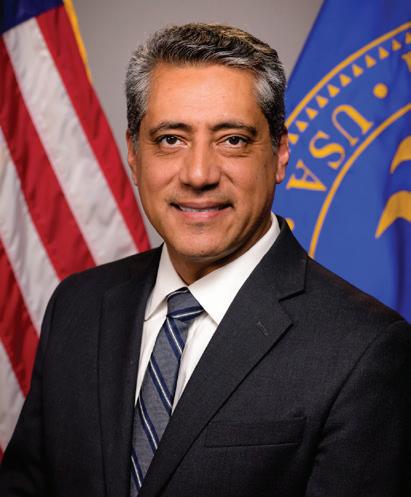
3
HRSA HWRC PROGRAM
The National Center for Health Workforce Analysis (NCHWA) is a national resource for health workforce research, information, and data. As a division within the Bureau of Health Workforce (BHW) at the Health Resources and Services Administration (HRSA), NCHWA supports policy makers with information and data to help inform decisions regarding health workforce education, training, and healthcare delivery (https://bhw.hrsa.gov/health-workforce-analysis/about).
As part of these efforts, NCHWA oversees HRSA’s Health Workforce Research Center (HWRC) cooperative agreement program, which provides funding to 9 centers in the US. Collectively, these Centers offer expertise in the following arenas:
• Allied health workforce (University of Washington)
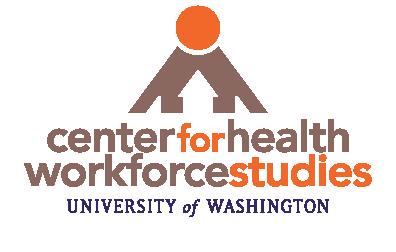
• Behavioral health workforce (University of North Carolina at Chapel Hill)
• Emerging health workforce topics (George Washington University; University of North Carolina at Chapel Hill)
• Health equity in health workforce education and training (University of Washington)
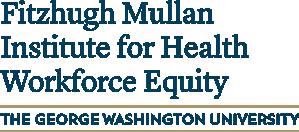
• Long-term care workforce (University of California, San Francisco)
• Oral health workforce (State University of New York, Albany)


• Public health (University of Minnesota)
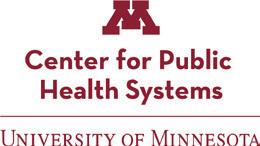
• Technical assistance (State University of New York, Albany)



4

5 24 Published Journal Articles 13 Reports & Briefs 130 Presentations & Posters 3 Instructional Videos 15 Webinars & Virtual Meetings 68 Conferences & Meetings DISSEMINATION EFFORTS 2022-2023 HWRC Research Dissemination
STUDY HIGHLIGHTS
Allied Health Workforce Research Center
Medical Assistants’ Telehealth Roles and Skills in Primary Care During the COVID-19 Pandemic
The use of telehealth skyrocketed during the early stages of the COVID-19 pandemic, due to greatly limited in-person health care clinic visits, including those for primary care. Yet patients needed a way to access primary care services, whether to continue their ongoing care or address physical and behavioral health conditions that were caused or exacerbated by the pandemic. When medical assistants (MAs) were available to telehealth teams during the pandemic, their roles in promoting clinic efficiency and care quality were recognized.
This REPORT examines the roles of MAs in the use of telehealth to deliver primary care during the COVID-19 pandemic.

Health Equity Workforce Research Center
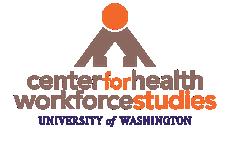

Doula Project 2.0: Increasing the Use of Doulas by Underserved Communities
Birth doulas help fill structural gaps in perinatal and maternal health care particularly in underserved communities. The Health Equity HWRC conducted an initial study on doulas that examined the roles of doulas, how they are trained, where they work, and what populations they serve. This latest study builds on that prior work by focusing on doulas who work with underserved and marginalized communities. The study found that while doulas work to improve perinatal health, doulas themselves are doing equity work, such as facilitating culturally grounded birth practices and addressing upstream determinants of health, amidst an inequitable system and with insufficient political or financial support. Increased compensation and systemic support that acknowledges the breadth of services provided are needed to strengthen and sustain this critical part of the perinatal workforce.
Findings from this study resulted in a JOURNAL ARTICLE and MULTIPLE PRESENTATIONS, and were recently featured in a Seattle Times ARTICLE
6
STUDY HIGHLIGHTS
Carolina Health Workforce Research Center
Moral Distress Among Clinicians Working in US Safety
Net Practices During the COVID-19 Pandemic: A Mixed Methods Study
News photos and stories of health professionals in intensive care units overflowing with ill patients have been among the most iconic images of the COVID-19 pandemic. These clinicians have shown physical and emotional exhaustion, and also claim to be morally distressed by witnessing and participating in patients’ care and deaths in sheer numbers under circumstances that feel morally wrong. Moral distress among healthcare professionals is a concept several decades old but still evolving.
This study explored the causes and levels of moral distress experienced by clinicians caring for low-income patients of safety-net practices in the US during the COVID-19 pandemic. The research resulted in a journal ARTICLE published in BMJ Open.

GW Health Workforce Research Center

Primary Care Provider Medicaid Participation Across the United States, 2016
Providers’ participation in Medicaid has been an ongoing area of interest for researchers, but there have been limitations to prior studies. For example, studies based on analyzing claims data have often been limited to data from a single state, and the last national-level analysis utilized 2009 Medicaid claims and was limited to 24 states. This study assessed primary care providers’ participation in Medicaid programs across 45 states and provider specialties and professions, using the newly accessible national-level Transformed Medicaid Statistical Information System (T- MSIS) 2016 claims dataset.
The research resulted in a journal ARTICLE published in the Journal of Health Care for the Poor and Underserved, a Health Affairs Forefront BLOGPOST, and the interactive online MEDICAID PRIMARY CARE WORKFORCE TRACKER.
7
STUDY HIGHLIGHTS
Health Workforce Technical Assistance Center

NURSING EDUCATION VIRTUAL MEETING SERIES

Barriers and Challenges to the Clinical Placement of Nursing Students
This virtual meeting explored the barriers and challenges to clinical placement of nursing students. Audience members’ suggestions were discussed in order to identify potential solutions to these problems.
Interprofessional Simulation—Communication Is Key
During this interactive discussion, Dr. Briese discussed the process of designing and running an interprofessional simulation-based learning experience (SBLE) aimed at facilitating communication between long-term care, emergency medical services (EMS), and emergency department (ED) healthcare providers.
Clinical Faculty and Educator Development—A Call for Transformation
Dr. Patricia Benner and colleagues’ published book Educating Nurses: A Call For Radical Transformation shares results of a multi-year study investigating nursing education and describes needed changes and specific recommendations for the nursing education community. HealthImpact has partnered with Dr. Benner to create the Clinical Faculty and Education Certificate Program, to help clinical faculty and educators transform their teaching practices.
This virtual meeting reviewed these strategies to help better prepare the next generation of nursing professionals.
Nurse Educators: Balancing Academic Responsibilities and Maintaining Clinical Expertise
Balancing the responsibilities of being a nurse educator while working in clinical practice can be both challenging and rewarding. This interactive discussion explored how to successfully navigate these separate roles. Discussion topics included onboarding, faculty retention, and more.

8
STUDY HIGHLIGHTS
Oral Health Workforce Research Center

Impacts of State Policies on Provision of Teledentistry Services by Safety-Net Providers


Prior to the COVID-19 pandemic, the use of teledentistry was limited. The utility of teledentistry was widely questioned in light of the predominately procedural nature of dentistry. Due to the closures of dental practices and organizations during the early months of the pandemic, teledentistry quickly became a useful tool for dental providers to connect with patients for both private practice dentists and those in public health practice. With assistance from the National Network of Oral Health Access (NNOHA), OHWRC researchers 1) assessed the state laws, regulations, and policies related to teledentistry in the 51 regulatory jurisdictions of the US and 2) conducted interviews with dental providers and dental staff in the safety-net on the use of teledentisty prior to, during, and subsequent to the COVID19 pandemic.
This study resulted in an interactive INFOGRAPHIC on the variation in teledentisty regulation by state and a REPORT: Teledentistry Adoption and Use During the COVID-19 Pandemic.
UCSF Health Workforce Research Center on Long-Term Care

Personal Care Aides: Assessing Self-Care Needs and Worker Shortages in Rural Areas
Previous research has documented shortages of personal care aides who provide Medicaid home and community-based services, but there are few detailed geographic data to determine the areas of greatest need and assess the availability of personal care aides nationwide. Using 2013–2017 data from the American Community Survey and the Office of Management and Budget, this research is the first of its kind to identify potential shortages by linking the availability of workers to the potential demand for services across different geographies.
The research produced 2 INTERACTIVE DATA WEBSITES as well as an ARTICLE in Health Affairs that was later selected as an Editor’s Pick for 2022.
9
YEAR IN REVIEW

Allied Health & Health Equity Workforce Research Centers

Emergency medical service (EMS) personnel, including community paramedics (CPs), were at the center of the early medical response to the COVID-19 pandemic and continued to play critical roles throughout the public health emergency. Beginning with the pandemic’s onset in March 2020, these essential health care workers bore the burden of responding to the public’s initial reactions to a disease about which little was known and remained at the forefront of evolving treatment and safety protocols as new information continually emerged.
This report discusses the perspectives of 17 key informant experts on how the EMS and CP workforces responded to COVID-19 during the first year of the pandemic and how well-being challenges continue to affect these workforces.

Landscape of the Health Informatics Workforce
The health informatics workforce plays a critical role in improving patient health by leveraging big data and harnessing the power of machine learning and AI, among other tools. Many healthcare workers are currently interacting with health information technology with varying levels of intensity.
This rapid response brief provides an overview of the complex and evolving health informatics workforce.
Inequitable Care Delivery Toward COVID-19 Positive People of Color
People
It is well known that Black, Indigenous, and People of Color (BIPOC) as well as people with disabilities experience discrimination and bias in the health care services they receive. Few studies have examined such inequities in healthcare during the COVID-19 pandemic, where pandemic-related restrictions and policies compounded existing inequitable care for these populations.
This article examines providers’ observations of inequitable care delivery towards COVID-19 positive patients who are BIPOC and/or have disabilities, and identifies ways the health workforce may be contributing to inequitable care.
11
The EMS and Community Paramedic Workforces Respond to COVID-19
and
With Disabilities
HEALTH EQUITY HWRC PRODUCTS ALLIED HEALTH HWRC PRODUCTS
Competencies, Training Needs, and Turnover Among Rural Compared With Urban Local Public Health Practitioners: 2021 Public Health Workforce Interests and Needs Survey
The COVID-19 pandemic has severely impacted the US public health workforce. High turnover of local health department (LHD) personnel has created concerns about workforce needs and capacity. This strain has been particularly alarming among rural LHDs due to an historical lack of investment and limited workforce capacity compared to their urban counterparts.
This article compares rural versus urban local public health workforce competencies and training needs, COVID-19 impact, and turnover risk.
Using Experiential Education in Health Professions Training to Improve Health Equity: Lessons Learned From Interviews With Key Informants
Health researchers view social determinants of health as one of the underlying causes of health inequities in the United States. There has been an increasing demand for health professionals to become more educated about the role of social determinants of health—one strategy that addresses this is experiential education programs as part of health professions training.
This article identifies best practices in experiential education programs related to social determinants and health equity for training purposes, as well gaps in current models, and suggestions to broaden implementation of these programs.
Allied Health & Health Equity Workforce Research Centers
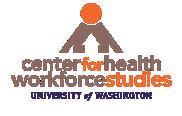
Financial Instability of Federal Navigator Program Challenges Organizations to Help Uninsured Enroll in Health Insurance Coverage
Under the Affordable Care Act (ACA), the Obama Administration created the federal Health Insurance Navigator Program, which seeks to reduce the rate of uninsured in the United States. Under this program, navigators help people procure insurance coverage through federally facilitated Marketplaces (or Exchanges). During COVID-19, financial insecurity and substantial budget cuts created increased shortages and budget cuts for navigator assistance, straining the program even further than pre-pandemic.
This article examines how fluctuating federal funding and the COVID-19 pandemic affected navigator organizations and their employees in 2020.

Disability Competency Training in Medical Education
Health care providers’ lack of knowledge about the experiences and needs of individuals with disabilities contributes to health care disparities in the disabled population. In 2019, the Alliance for Disability for Health Care Education published Core Competencies on Disability for Health Care Education (Core Competencies) to promote the integration of disability-related content and experiences into health care education and training programs.
This article explores the extent to which the Core Competencies are addressed in medical education programs and the facilitators and barriers to expanding curricular integration.
12
Find these studies and more at https://familymedicine.uw.edu/chws/
Carolina Health Workforce Research Center
When the Note Doesn’t Fit: Social Workers Documenting in the Electronic Health Record on Integrated Health Teams
Social workers hold vital positions on interpofessional teams or integrated healthcare teams (IHC), increasingly in primary care settings, to deliver behavorial and mental health services. Electronic health records (EHR) serve as a communication tool within these teams, but little is known about how social workers interface with EHR.
This article in the Journal of Technology in Human Services presents 3 themes that emerged from a qualitative study seeking to understand how social workers document their work in EHRs in integrated primary care settings.
Frontline, Essential, and Invisible: The Needs of Low-Wage Workers in Hospital Settings During COVID-19
Burnout is a prominent concern in the healthcare workforce. Although relevant to all healthcare professions, low-wage workers are often left out of the conversation despite the vital role they play in providing care. The US has an estimated 7 million underpaid but essential health care workers, including home health workers, medical and
nursing assistants, food service workers, patient orderlies, housekeepers, patient sitters, and janitors.
This article presents findings of a qualitative study seeking to understand some of the main stressors contributing to burnout for frontline, essential healthcare workers in hospital settings.
Are DEA-Waivered Buprenorphine Prescribers Co-Located With Behavioral Health Clinicians?
Medication is increasingly used to treat opioid use disorder (OUD) in primary care. It incorporates medication (ie, buprenorphine) with behavioral therapy and/or psychosocial services. Targeted planning for co-location of DEA-waivered buprenorphine prescribers and behavioral health (BH) clinicians could increase the use of MOUD. Presently, less than half of all waivered prescribers, outside of hospitals, are co-located with BH clinicians.
This article provides information on where co-location of DEA-waivered buprenorphine prescribers and BH clinicians occurs and among which type of providers. As this article details, co-location varies geographically and by profession.
13
PA and NP Onboarding in Primary Care: The Participant Perspective
With increasing growth of physician assistant (PA) and nurse practitioner (NP) workforces, organizations that want to establish a successful transition to practice for PAs and NPs should consider implementing onboarding programs. However, most new-graduate primary care PAs and NPs have specific transition-to-practice needs, and understanding these needs is important for proper implementation of organizations’ onboarding practices.
This article examines newly-graduated PA and NP perspectives of onboarding programs in their first primary care position and provides recommendations for employers hoping to create or strengthen onboarding programs.

Workplace Violence in Healthcare Settings
Workplace violence is described by the Occupational Safety and Health Administration (OSHA) as “any act or threat of physical violence, harassment, intimidation, or other threatening disruptive behavior that occurs at the work site. It ranges from threats and verbal abuse to physical assaults and even homicide.”
Reports suggest workplace violence in healthcare settings has increased during the COVID-19 pandemic, but most research uses pre-pandemic data sources.
This brief summarizes current research on workplace violence in healthcare settings in the COVID-19 pandemic context.
Interrupted Integrated Healthcare? How Primary Care Practices Adapted Core Components of Integrated Healthcare in Response to COVID-19
COVID-19 interupted integrated health care (IHC) teams practicing in the same physical space. Although the use of telehealth increased, little was known about how other processes and integrated workflows were adapted during the pandemic in IHC teams.
This policy brief explores ways in which IHC was modified during the pandemic, including communication, collaboration, and coordination of care by presenting 4 main themes from a qualitative study of 20 participants, 15 behavioral health providers, and 5 physical health providers.
14
Carolina Health Workforce Research Center Find these studies and more on their WEBSITE
GW Health Workforce Research Center
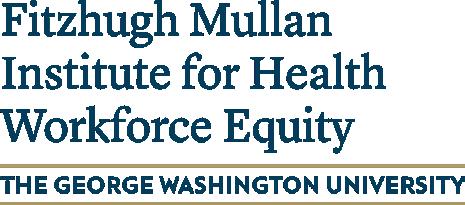
The Use of Interpreters in Health Centers: A MixedMethods Analysis
Health centers provide primary care to millions of patients with limited English proficiency (LEP) through language service programs. Approximately 25% of 30 million patients who received care at health centers in 2019 had LEP and needed interpreters when clinicians and other staff were not fluent in their language.
This article examines interpreter use in health centers from 2009-2019 and describes models of service delivery commonly used to meet patients’ language needs.
Telehealth Use and Access to Care for Underserved Populations Before and During the COVID-19 Pandemic
Telehealth use increased steadily in the years leading up to the COVID-19 pandemic but underserved populations were among the least likely to use telehealth compared with affluent, privately insured populations. While recent studies have documented rapid growth in telehealth visits during the pandemic, none have analyzed the impact of telehealth on access to care.
This article uses Association of American Medical Colleges’ Consumer Survey data to analyze the relationship between access to care and telehealth during the pandemic, with a particular focus on underserved populations.

Association Between State Payment Parity Policies and Telehealth Usage at Community Health Centers During COVID-19
The COVID-19 pandemic drove widespread use of telehealth, making the virtual care environment inherently different in 2021 than it had been previously. Due to unique financial constraints facing community health centers (CHCs), the sustainability of telehealth may be highly relevant to the relationship between telehealth utilization and payment parity.
This article discusses the association between payment parity policies and telehealth utilization at CHCs before, during, and after the onset of the pandemic.
15
Changes in Waivered Clinicians Prescribing Buprenorphine and Prescription Volume by Patient Limit
The Drug Addiction Treatment Act (DATA) of 2000 created a pathway for clinicians to obtain waivers (“DATA waivers”) to treat patients with opioid use disorder (OUD) outside of an opioid treatment program, provided the clinicians met certification and training requirements. Prior research mainly relies on DATAwaiver status or prescription data alone to estimate the workforce, likely leading to overestimates.
This article examines trends in DATA-waivered clinicians’ active participation in prescribing buprenorphine, overall and by patient limits, between January 2017 and May 2021.

Diversity of the US Public Health Workforce Pipeline (2016–2020): Role of Academic Institutions
The COVID-19 pandemic highlighted existing structural racism that widened gaps in access to care and health outcomes, disproportionately affecting racial and ethnic minorities. Research has shown that a racially and ethnically diverse workforce can be instrumental in addressing disparities. Lack of diversity in the public health workforce can occur from several factors, including underrepresentation
of minority groups in the public health education pipeline.
This article discusses the analysis of 5 academic years which identifies institutional characteristics associated with public health student diversity, including faculty diversity.
How Governor Directives Changed Health Workforce Flexibility in Response to the COVID-19 Pandemic
In times of heightened population health needs, the health workforce must respond quickly and efficiently, especially at the state level. The COVID-19 pandemic exposed the needs for greater flexibility in scope of practice and interstate mobility areas of health workforce regulation. The lack of a coordinated national response early in the pandemic left the onus on states—particularly on state governors— to determine how to deploy their health workforce to combat COVID-19.

This article examines state governors’ executive orders related to 2 key health workforce flexibility issues—scope of practice (SOP) and licensing—in response to the COVID-19 pandemic.
Find these studies and more at: www.gwhwi.org/hwrc.html
16
GW Health Workforce Research Center
Health Workforce Technical Assistance Center
Characteristics of Public Health Registered Nurses
and Advanced Practice Registered Nurses: Lessons Learned From the 2018 National Sample Survey of Registered Nurses
This journal article examines differences in characteristics between public health registered nurses (PH RNs) and other RNs and between PH advanced practice registered nurses (APRNs) and other APRNs.
The Impact of COVID-19 on Medical and Registered Nurse Education
This research brief examines the impact of COVID-19 on undergraduate medical education and on registered nurse (RN) education from the start of the pandemic up to the present.
Health Professions Education Program Outcomes, 2011-2020
This chartbook uses data from the Integrated Postsecondary Education Data System (IPEDS) to describe education program outcomes for 32 health professions between the years 2011 and 2020.
Compendium of Federal Data Sources to Support Health Workforce Analysis

This compendium provides a summary of 45 federal data sources that can be used to support health workforce analysis.
WEBINARS AND VIRTUAL MEETINGS

Advancing Behavioral Health Workforce Research and Policy
Addressing the behavioral health crisis in the US requires understanding who comprises the behavioral health workforce, where they are distributed, and what policy and practice issues facilitate or inhibit the delivery of behavioral health care. During this webinar experts from the UNC Behavioral Health Workforce Research Center provided an overview of research efforts designed to inform policies which support the behavioral health workforce and increase access to quality behavioral health services.
Physicians As Shock Absorbers: The Structural Sources of Discontent in Medicine
Despite repeated calls for systemic solutions to physician stress, few studies have actually examined how “the system works”—ie, how structural factors intersect in real-time to create unhealthy work environments. This webinar explored how organizational-, professional-, and societal-level factors intersect to shape wellbeing and job satisfaction, based on an 8-month ethnography at an urban pediatrics clinic.
17
Find these studies and more at: healthworkforceTA.org
Birth Doulas Addressing Systemic Racism in Underserved Communities
Evidence of birth doulas’ positive impacts on pregnancy and birth outcomes continues to grow, particularly among underserved populations. Policymakers have significant interest in expanding birth doula services, however little is known about the role of this workforce and how to expand their services. This webinar discussed 2 studies focused on addressing this gap, including organizational approaches to expanding services, system-level changes which are needed, and the work-related experiences and stressors doulas describe in delivering these services.
Career Pathways in Health Workforce Research

Health workforce researchers work in a wide variety of settings and have taken numerous pathways to reach their current positions. Panelists in this webinar describe their respective career paths and share insights they have gained along their professional journeys. This webinar is intended for people at all career stages who are interested in exploring options for pursuing careers in health workforce research.
Virtual Meeting Q&A: Growing, Sustaining, and Supporting the Birth Doula Workforce
There has been growing interest in recent years about doula care and its role in addressing racial disparities in maternal health. Over half of the states in the US are currently exploring or in the process of implementing Medicaid coverage for doula care. During this virtual meeting our panel of experts answered audience questions about the birth doula workforce.
How to Condense Research Findings

This is the first video in our HWTAC Dissemination Video Series, developed to assist researchers in sharing their study findings with the widest audience. In this video you will learn how to:
•Select research findings that will be the most impactful

•Communicate those key findings with concise, easy-to-understand language
Demystifying Infographics: How to Visualize Your Research
In this second video in our HWTAC Dissemination Video Series, learn why infographics are an important communication tool to help your research reach a broader audience. We’ll also take you step by step through the process of selecting content, creating data visualizations, and organizing your layout.
How to Identify and Visualize Clusters Using ArcGIS and GeoDa
This training video instructs how to identify and visualize distributions of mental health related 911 calls in New York City, utilizing 2 programs: ArcGIS and Geoda. The viewer is taken step by step through an Exploratory Spatial Data Analysis (ESDA) using Global and Local Moran’s I statistics.
18
DISSEMINATION VIDEO SERIES
ARCGIS VIDEO SERIES
Health Workforce Technical Assistance Center
Oral Health Workforce Research Center
Exploring the Impact of Household, Personal, and Employment Characteristics on Dentistry’s Income Gap Between Men and Women
Although the dental workforce is diversifying, there continues to be an income gap between men and women in the oral health workforce. This is particularly striking in a field where females and minorities are more likely to treat populations who might otherwise struggle to get access to oral health care.
This JADA article examines the extent of the income gap between male and female dentists and evaluates the impact of specific characteristics on income differences.
Practice Patterns of Postgraduate Trained Dentists in the United States
Assessing the distribution and organization of the dental workforce is critical to understand how to address poor access to dental care for lower income families. The US currenly lacks a significant supply of dentists who accept Medicaid, or will work in Federally Qualified Health Centers (FQHCs), which impacts communities of color and disabled individuals. There is also evidence that postgraduate dental (PGD) primary care training can increase access to care for underserved populations.
This Journal of Dental Education article examines the individual, educational, community, and policy factors that predict whether PGD-trained dentists serve Medicaid children, accept new Medicaid patients, or work in an FQHC.
Trends in Post-Graduate Dental Training in the United States
Post-graduate dental (PGD) training has increased 27% over the last decade (2009-2019). More than 75% of this increase was due to the growth of primary care training. Despite this increase, little is known about factors associated with the pursuit of PGD training and whether or not they vary between different dental specialty fields. There is also evidence that PGD training can influence access to care for underserved populations.
This Journal of Dental Education article examines the individual, institutional, and policy factors that predict the pursuit of PGD training.

Implications of COVID-19 on Safety-Net Oral Health Services



The temporary postponement of oral health services beginning in March 2020 had lasting impacts on dental providers, but especially on those in the safety-net. Safety-net organizations, which were established to meet the health care needs of people who, for reasons of income, insurance status, geography, disability, race, language, or ethnicity, are unable to access needed health services, were profoundly impacted.
This report describes the impact of the COVID-19 pandemic on the delivery of oral health services in the dental safety-net.
19
Teledentistry Trends in the United States During the COVID-19 Pandemic
Across the US, states have implemented teledentistry in response to COVID-19 in varying degrees, including parameters such as existence of teledentistry regulation, Medicaid reimbursement of telehealth (including teledentistry), payment parity, state Medicaid expansion, Medicaid dental benefits for adults, and direct access for dental hygienists and/or dental assistants.
This report reviews the use of teledentistry following the COVID-19 pandemic in 4 states—California, Maine, Pennsylvania, and Wisconsin—and the supports needed to enhance dental care in a postCOVID-19 world.
COVID-19 Impact on Dental Service Delivery, Financing, Regulation, and



Education Systems: An Environmental Scan
The COVID-19 pandemic had a profound impact on all aspects of the oral health care system. This report summarizes the immediate and longer-term consequences of the COVID-19 pandemic on 4 domains of the oral health care system: care delivery, regulation, education, and finance.
Find these studies and more at: oralhealthworkforce.org
Parental Perspectives on Barriers to Pediatric Oral Health Care: Associations With Children’s And Families’ Characteristics
Despite improvements in oral health care for children in recent years, poor pediatric oral health continues to be a serious health issue in the US. To investigate this, a web-based survey was conducted with 1,745 parents/legal guardians regarding their children’s access to oral health services.
This Pediatric Dentistry article identifies barriers to needed dental care for children and examines factors contributing to differential experiences with those barriers.
The Impact of Pandemic Concerns on Consumers’ Teledentistry Use During the First Months of the COVID-19 Pandemic
The temporary closure of dental offices and fear related to the COVID-19 pandemic affected dental visits and led to experimentation in using teledentistry to serve oral health care needs.
This article published in Public Health Reports examines consumers’ use of teledentistry from June 2019 through June 2020, assessing respondents’ teledentistry use in association with their levels of anxiety about the pandemic, their demographic and socioeconomic characteristics, and geography.

20
Oral Health Workforce Research Center
UCSF Health Workforce Research Center on Long-Term Care
Defining a Long-Term Care Workforce Shortage Designation: A Conceptual Approach
The direct care workforce includes many categories of health care workers who provide long-term care services and supports (LTSS). This workforce is estimated to add more than 1.3 million jobs between 2018-2028. However, it is not clear that this job growth will be sufficient to meet the demand. It is likely that growth of the direct care workforce will occur unevenly across geographic areas.
This brief describes a conceptual approach to constructing a long-term care workforce shortage designation, similar in scope to existing Health Resources and Services Administration (HRSA) health professional shortage area (HPSA) designations.
Alzheimer’s Disease Services, Staffing, and Outcomes in Adult Day Health Centers
Accelerating rates of Alzheimer’s Disease and Related Dementia (ADRD) has led to a greater reliance on adult day health centers (ADHCs) and their skilled workforce. Although there is a lot of research on this topic, little is known about staffing in ADHCs that provide ADRD services
compared to ADHCs that do not. As populations with ADRD increase, changes in staffing demands could have a significant impact on long-term workforce planning and development.
This article examines differences in staffing between ADHCs that offer ADRD services versus those that do not, and whether staffing levels are associated with the percentage of ADHC participants with ADRD and their outcomes.
Rural-Urban Prescribing Patterns by Primary Care and Behavioral Health Providers in Older Adults With Serious Mental Illness
Aging adults with serious mental issues (SMI), including bipolar disease, depression, and schizophrenia, often have multiple chronic conditions and high rates of comorbidities. One of the major issues for older adults with SMI is the widespread shortage of behavioral health specialists (BHSs) which has created a lack of mental health services in the US.
This article assesses rural/urban prescribing patterns in older adults with SMI by primary care physicians (PCPs) and BHSs, and by clinician type.
21
In the Trenches: Frontline Workers’ Burnout Experiences in Long-term Care Settings in the COVID-19 Pandemic
To understand the unique experiences of front-line healthcare workers in long-term care settings and identify necessary support strategies, researchers conducted in-depth qualitative interviews with workers across a variety of long-term care settings.
This report assesses stress and burnout to gain insights about how long-term health care systems can best promote worker safety and well-being in times of crises.

Long-Term Care Staffing and Regulations: Impact and Implications of the COVID-19 Pandemic
The long-term care industry had been struggling with many workforce issues before the COVID-19 pandemic, including shortages of workers, high turnover rates, lack of training, low pay, and a lack of benefits such as paid sick leave. The pandemic exacerbated these issues and made them more apparent to the public. The COVID-19 pandemic has had a significant impact on long-term care facilities, affecting both residents and care providers.
This rapid response report investigates the impact of the pandemic on the long-term care workforce and the outlook for the future.
Find these studies and more at: healthworkforce.ucsf.edu
Racial Disparities in Financial Security, Work and Leisure Activities, and Quality of Life Among the Direct Care Workforce
Personal care, home health, and nursing aides provide the majority of care to chronically ill and disabled older adults. This workforce faces challenging working conditions, resulting in high turnover and workforce instability that affect the quality of care for older adults. This study adds to the literature by examining racial and ethnic disparities in well-being among direct care workers, workers, who are especially vulnerable to struggles at work and at home.
This article examines financial security, work–life balance, and quality of life of Black, Hispanic, and workers of other race/ethnicity compared to White workers among the direct care workforce.
Emerging Health Technologies in Long-Term Care and Suppliers’ Views on Their Potential to Assist and Support the Workforce
Emerging technological advances have the potential to assist the long-term care (LTC) workforce in caring for an aging population in the home and LTC settings. Technology may change workforce needs and alleviate increasing workforce demand.
This article analyzes emerging health technologies that may assist, replace, and/or support recruitment and retention of the workforce in home and LTC settings.
22
UCSF Health Workforce Research Center on Long-Term Care
MEET THE NEW HWRCs

The Consortium for Workforce Research in Public Health
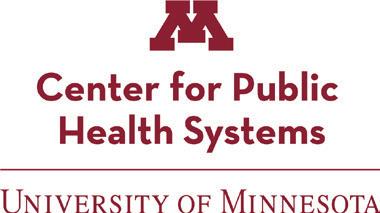
The Consortium for Workforce Research in Public Health (CWORPH) is a new HRSA-sponsored HWRC that was created in September of 2022. CWORPH brings together 7 leading researchers from 6 highly-ranked schools of public health to create a unique national network of public health workforce research expertise:
• Dr. Jonathon P. Leider, PhD (University of Minnesota)
• Dr. Janette Dill, PhD, MA, MPH (University of Minnesota)
• Dr. Betty Bekemeier, PhD, MSN, MPH (University of Washington)
• Dr. Heather Krasna, PhD, EdM, MS (Columbia University)
• Mr. Michael Meit, MA, MPH (East Tennessee State University)
• Dr. Beth Resnick, DrPH, MPH (Johns Hopkins University)
• Dr. Valerie Yeager, DrPH, MPH, MPhil (Indiana University)
CWORPH’s research focuses at a national level on understanding the composition and needs of the public health workforce, evaluating the role of the public health workforce in delivering foundational public health services, understanding what drives turnover in public health agencies, assessing ways to recruit and retain staff and fill workforce gaps, and identifying evidence-informed strategies and interventions. The consortium also has 10 practice-based partner groups that help inform research priorities and disseminate findings to the practice community.
CURRENT RESEARCH STUDIES
Triangulated Turnover Assessment Through Integration and Harmonization of Public Health Workforce Datasets
Roles, Competencies, and Distribution of Local Health Department Nurses Versus Other Types of Staff During the COVID-19 Pandemic
Strategies for Converting a Temporary Investment Into a Sustainable Workforce: Impact of the Disaster-Associated Federal Investment on the Public Health Workforce
Variation in the Public Health Workforce Composition by Geography, Economic Factors, Race, and Ethnicity
Comparing Education Levels and Salaries of Governmental Public Health Professionals With Standard Occupational Classification Averages, Job Postings, and Other Benchmarks
Workforce Development Planning: Recruitment Strategies and Innovations
Public Health Workforce Recruitment: Review of State Hiring Laws
Creating Comprehensive Estimates of Public Health Workforce ‘Supply’
Understanding the Role of Community Health Workers in the Public Health Workforce
Exploring the Use of Career Ladders to Recruit and Retain a Diverse Public Health Workforce
24
Find these studies and more at: cworph.org
UNC Behavioral Health Workforce Research Center
The University of North Carolina at Chapel Hill Behavioral Health Workforce Research Center (UNC-BHWRC) is a dynamic hub of innovative, data-driven research on the workforce responsible for providing mental health and substance use services. The UNC-BHWRC draws on the expertise of researchers and clinicians from several fields including social work, psychiatry, psychology, medicine, public health, and health policy.
UNC-BHWRC’s mission is to improve the behavioral health and well-being of the US by conducting research to strengthen the current and future behavioral health workforce through exploration of the disparities that perpetuate inequities in behavioral health treatment, access, and quality. Since its inception in 2022, the UNC-BHWRC has undertaken 10 projects that address national-level planning and policy-relevant research questions related to the behavioral health workforce, spanning from peer recovery support specialists, clinical social workers, and psychiatrists along with many others.
Their studies are designed to inform the strategic aims of both HRSA—to target funding toward programs and training that improve access to, supply of, distribution, diversity, and quality of behavioral health workforce—and SAMHSA— to strengthen the behavioral health workforce to better meet the behavioral health needs of individuals, communities, and service providers.
CURRENT RESEARCH STUDIES
Behavioral Health Screening for Youth
Defining the Perinatal Mental Health Workforce
Tele-Behavioral Health at Federally Qualified Health Centers—Differences by Provider Type
Who Is the Harm Reduction Workforce?
Are Behavioral Health Providers Located in Areas of Deprivation?
Preparing and Retaining the Behavioral Health Workforce in Safety Net Clinics: How Educational Experiences Relate to Work Satisfaction and Retention
Assessing the Child Mental Health Physician Workforce in a Time of Crisis
Exploring the Pathway to Graduate Social Work Education
Assessing the Adequacy of Training for Certified Peer Support Specialists (CPSS) Providing Mental Health and Substance Use Services
Recovery Support Specialists Experiences of Burnout and Plans for the Future
25
Find these studies and more on their WEBSITE

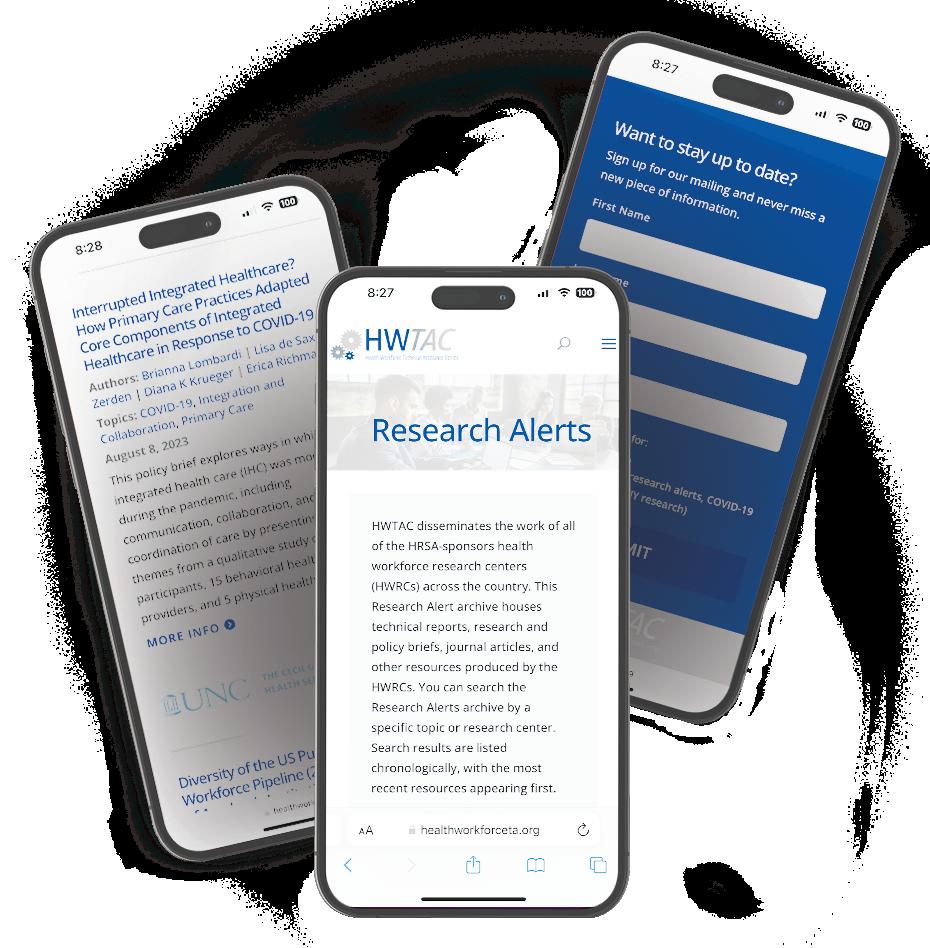
Subscribe to Health Workforce Research Alerts to receive the latest publications from the federally-funded health workforce research centers delivered directly to your inbox. SIGN UP TODAY www.healthworkforceTA.org/mailing-list-signup Never Search for the Latest Research Publications Again!
This report is produced by the Health Workforce Technical Assistance Center Copyright ©2023. The Health Workforce Technical Assistance Center (HWTAC) is supported by the Health Resources and Services Administration (HRSA) of the US Department of Health and Human Services (HHS) as part of an award totaling $450,000 with 0% financed with non-governmental sources. The contents are those of the authors and do not necessarily represent the official views of, nor an endorsement, by HRSA, HHS, or the US Government. For more information, please visit HRSA.gov. School of Public Health University at Albany, SUNY 1 University Place / Suite 220 Rensselaer, NY 12144-3445





















































































































































































































































































































































































































































































































